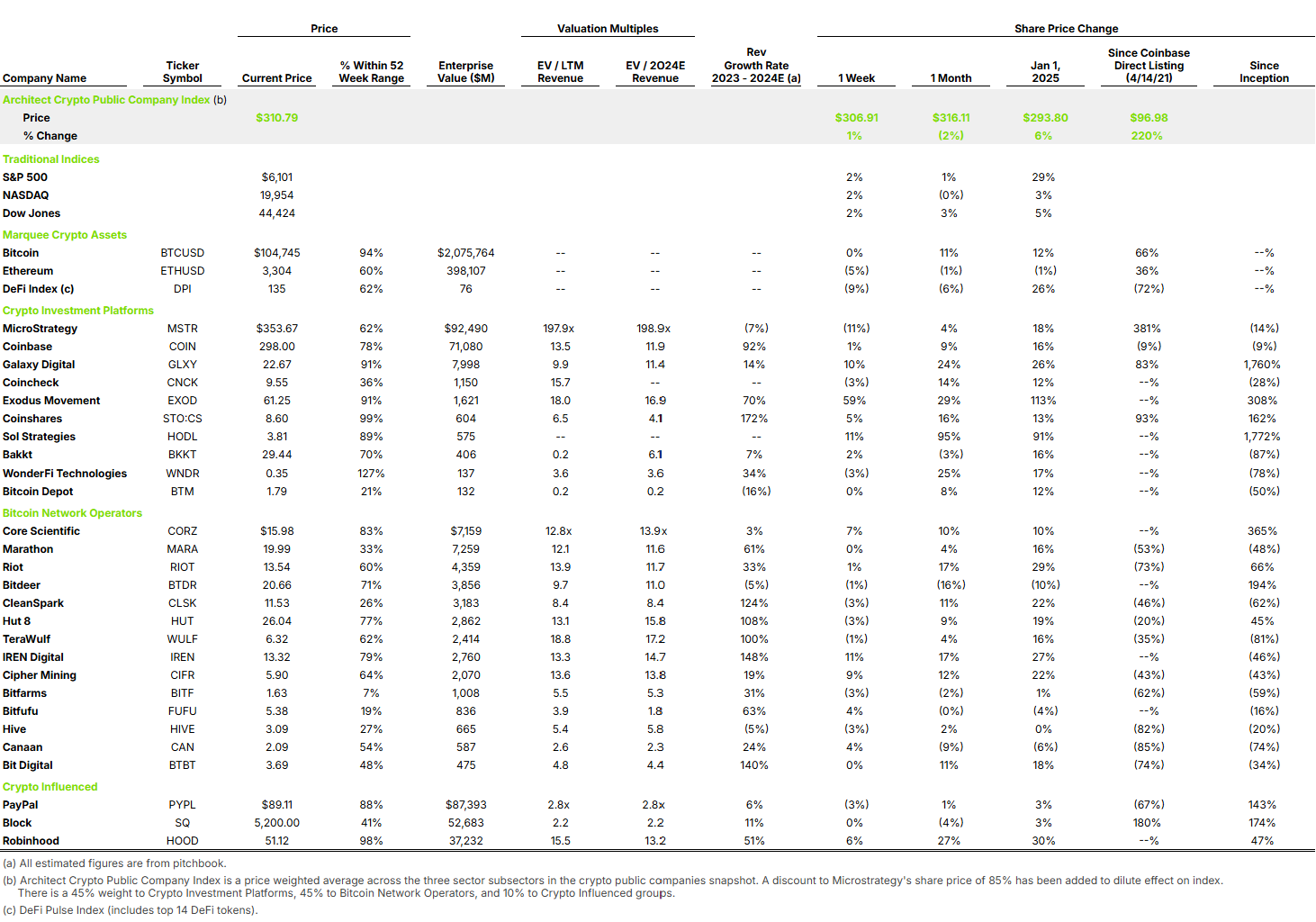The week of January 20, 2025, will go down as the most productive week for U.S. regulatory relations with the crypto industry. The impact on how publicly traded companies can openly adopt, internally use, and explicitly deliver blockchain-based services to their customers is monumental and clearly paves the way for the next billion users and beyond.
We hear a lot of “No” in the business of helping blockchain and crypto companies raise capital and sell their businesses. We’ve heard almost every reason for “No,” and by far the number one reason is the lack of a U.S. regulatory framework and the hostile position of U.S. regulators.
This week, a slew of crypto-related election promises converted into real-life actions, including:
The President signing an Executive Order on “Strengthening American Leadership in Digital Financial Technology,” which promises to:
-
- Protect and promote citizens’ and companies’ access to and use of blockchain
-
- Protect and promote the sovereignty of the U.S. Dollar, including stablecoins
-
- Protect and promote fair and open access to banking services
-
- Provide regulatory clarity and certainty
-
- Create a Working Group to evaluate the potential creation and maintenance of a national digital asset stockpile
The SEC creating a Crypto Task Force, led by Commissioner Hester Peirce (“Crypto Mom”), to develop a clear crypto regulatory framework
Acting CFTC Chair “Crypto” Caroline Pham appointing Harry Jung as Acting Chief of Staff, overseeing the CFTC’s work on crypto, DeFi, and digital assets
The Senate Banking Committee creating its first Subcommittee on Digital Assets and appointing Senator Cynthia Lummis to pass bipartisan digital asset legislation and to conduct robust oversight of federal financial regulators
The SEC canceling SAB-121, the controversial crypto on-balance-sheet accounting rule
The President pardoning Ross Ulbricht of Silk Road lore.
The real-time reverberations of these policies were already being discussed at Davos by institutions like Bank of America (whose CEO, Brian Moynihan, said the U.S. banking industry will embrace cryptocurrencies for payments if regulators allow it) and Morgan Stanley (whose CEO, Ted Pick, said they will work with U.S. regulators to explore deeper involvement in cryptocurrency markets). These are among the financial institutions historically slower to adopt emerging technologies.
All emerging technologies face an initial wall of “No,” and history has rewarded those who manage to break through that wall. For crypto, the key reasons behind the wall of “No” will now quickly and correctly be transformed into a tailwind of “Yes.”
If crypto created $3.5 trillion in value despite a wall of “No,” imagine what can be created with a tailwind of “Yes.”
Public markets are about to find out. (We continue to anticipate a robust M&A environment when they do.)
In separate news, Architect Partners promoted Ryan McCulloch to Vice President.
